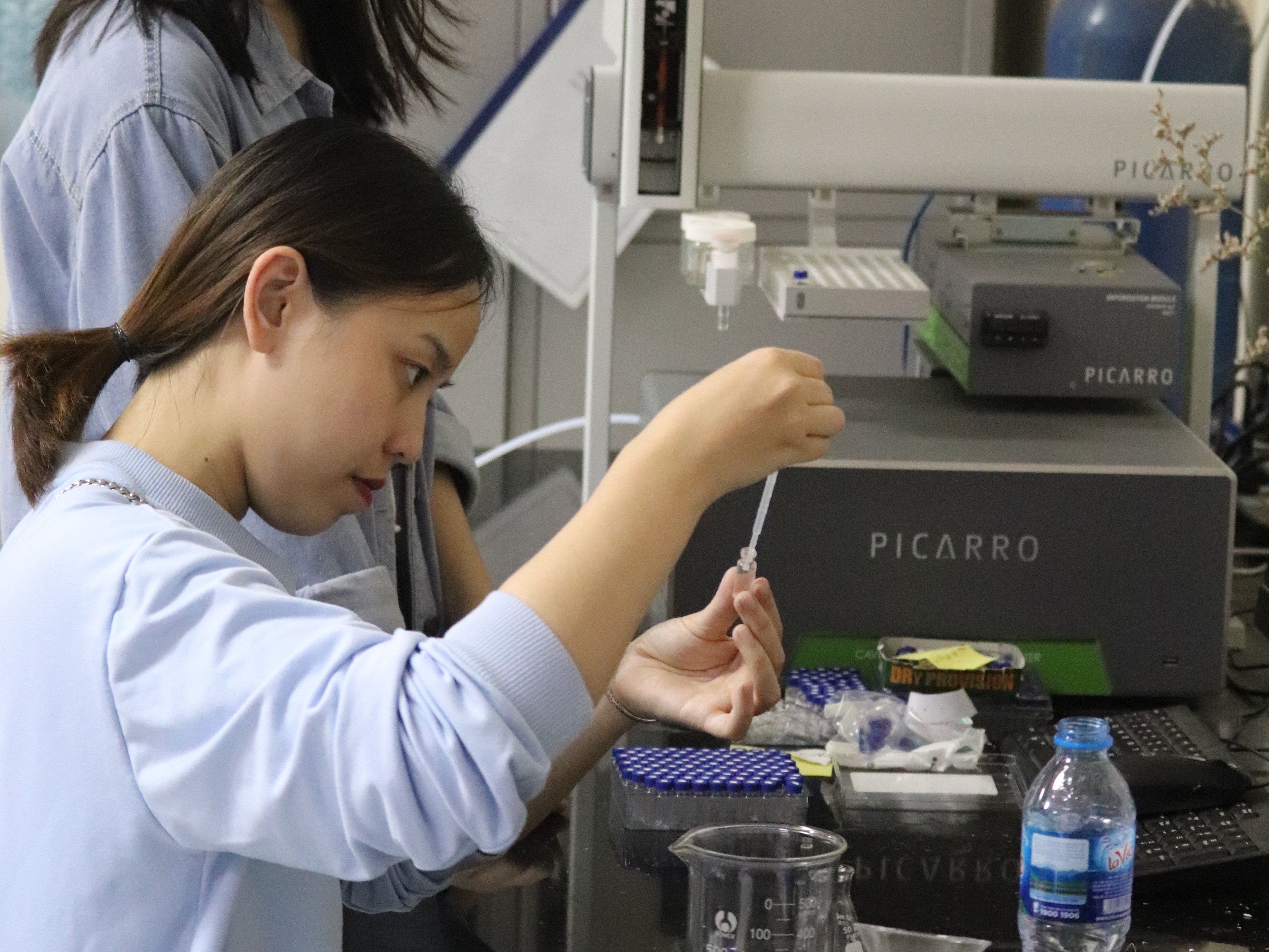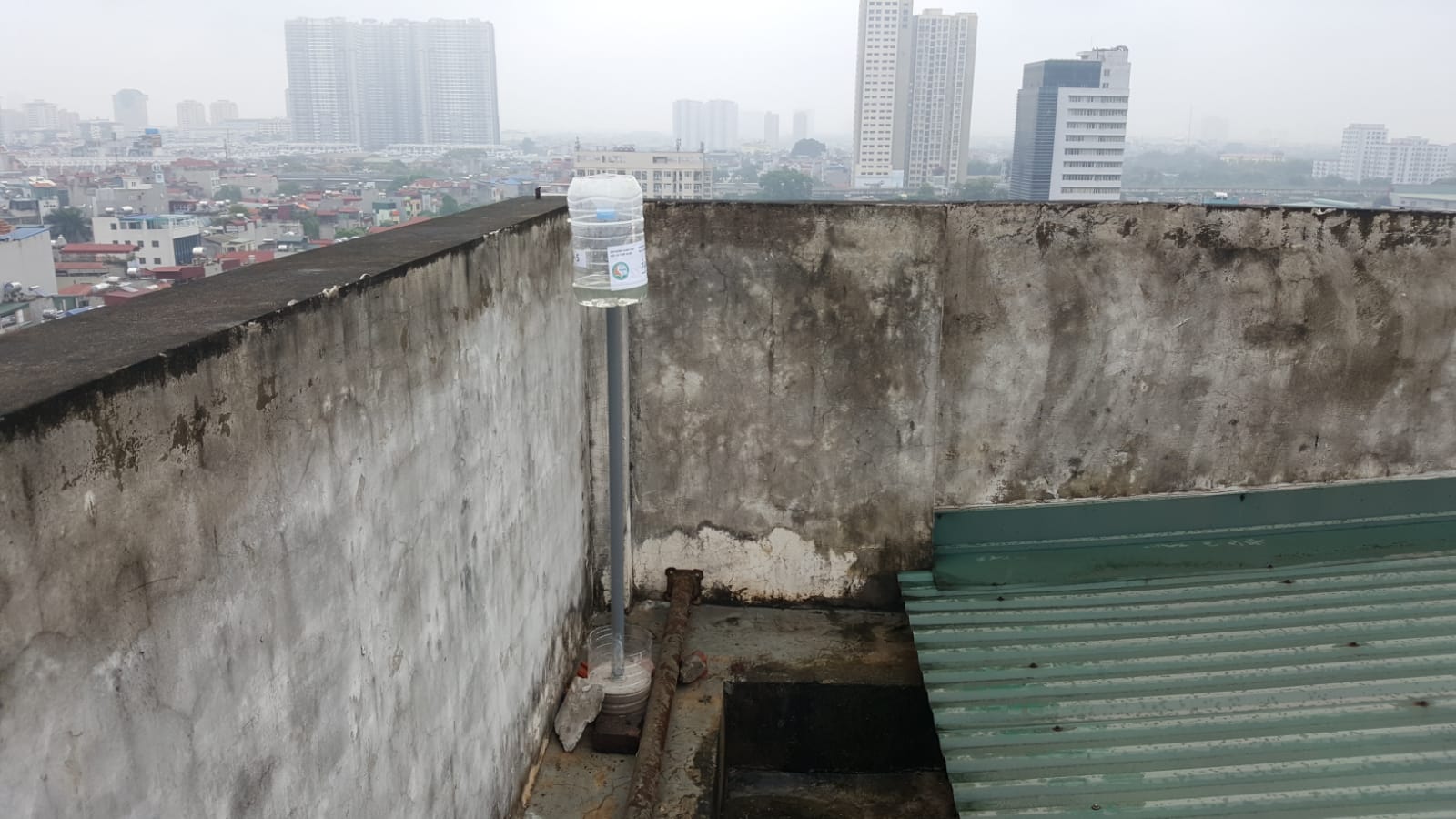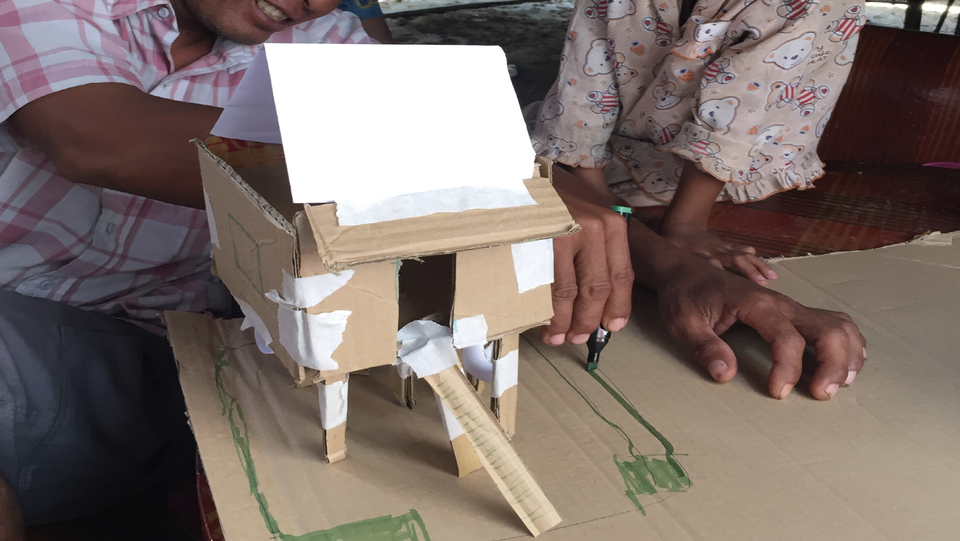Ongoing Research
These are some of the long-term ongoing research projects of the TU Delft – Vietnam cooperation. Are you interested in getting involved? Or do you want to know more? Do not hesitate to contact us!
Producing secondary standard stable isotope samples of 2H and 18O at the HUNRE lab
Currently in Vietnam, there are only three laboratories that have a Picarro isotope analyzer, and HUNRE is one of them. Standard samples required for using this device are ordered from overseas labs or Picarro suppliers, but this is costly. Therefore, researchers from the faculty of water resources at HUNRE have set out to produce the secondary standard sample set for the Northern Delta region of Vietnam to meet the natural condition in measuring the isotopic ratios of 2H and 18O. The results of this research will reduce the cost of analyzing stable isotope composition and allow for human resource development on the topic of istopes at the Water Resources Faculty in HUNRE.
West Lake water quality sampling
The West Lake is the largest lake in Hanoi, and is of great cultural and social importance to the city. How polluted is this lake, however? And what are the sources of this pollution? Starting in September 2019 several (groups of) Dutch and Vietnamese students have been sampling and measuring the water quality of the West Lake. Using equipment from HUNRE and taking measurements in the field and in the university lab, a time series of water quality parameters is being built. Thereby these students aim to monitor the lake quality and address these important questions.
HUNRE campus as a living lab
The aim of this project is to turn the HUNRE campus into a living lab. So many measurements can be done right on the campus, allowing for logistically simple and inexpensive research initiatives to be carried out. The HUNRE campus is being transformed into an informal learning environment and test-bed for students and researchers. For example, students have built rain gauges from plastic bottles and placed them all over the campus to investigate how tall buildings and vegetation impact precipitation measurements.






